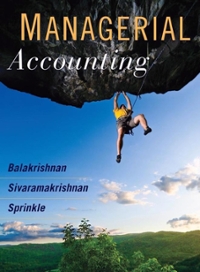Question
York-Perry Industries(YPI) manufactures a mix of affordable guitars(A, B,C) that are fabricated and assembled at four different processing stations(W, X,Y, Z). The operation is a
York-Perry Industries(YPI) manufactures a mix of affordable guitars(A, B,C) that are fabricated and assembled at four different processing stations(W, X,Y, Z). The operation is a batch process with small setup times that can be considered negligible. The product information(price, weeklydemand, and processingtimes) and process sequences are shown below. Purchased parts and raw materials(shown as aper-unit consumptionrate) are represented by inverted triangles. YPI is able to make and sell up to the limit of its demand per week with no penalties incurred for not meeting the full demand. Each workstation is staffed by one highly skilled worker who is dedicated to work on that workstation alone and is paid $15 per hour. The plant operates one8-hour shift per day and operates on a5-day work week(i.e., 40 hours of production per person perweek). Overhead costs are$9,000/week.
The senior management team wants to improve the profitability of the firm by accepting the right set of orders.Currently, decisions are made using the traditionalmethod, which is to accept as much of the product with the highest contribution margin as possible(up to the limit of itsdemand), followed by the next highest contributionproduct, and so on until all available capacity is utilized. Because the firm cannot satisfy all thedemand, the product mix must be chosen carefully. JayPerry, the newly promoted productionsupervisor, is knowledgeable about the theory of constraints and thebottleneck-based method for scheduling. He believes that profitability can indeed be improved if bottleneck resources are exploited to determine the product mix. What is the change in profitsif, instead of the traditional method that YPI has used thusfar, the bottleneck method advocated by Jay is used for selecting the productmix? What is the profit if the traditional method is used for determiningYPI's productmix? (Note: When determining the productmix, if the number of units to produce is not a wholenumber, be sure to round down to the next whole number before proceeding with any profitcalculations.)
A. The profit using the traditional method is $_______. (Enter your response rounded to the nearest wholenumber.)
B. What is the profit if the bottleneck-based method is used for determining YPI's product mix?_______(Note: When determining the product mix, if the number of units to produce is not a whole number, be sure to round down to the next whole number before proceeding with any profit calculations.)
C. The profit using the bottleneck-based method is $__________.(Enter your response rounded to the nearest whole number.)
Calculate the change in profit.
D.By using the bottleneck-based method, profit _________(increases/decreases) by $______.(Enter your response rounded to the nearest whole number.)

Step by Step Solution
There are 3 Steps involved in it
Step: 1

Get Instant Access to Expert-Tailored Solutions
See step-by-step solutions with expert insights and AI powered tools for academic success
Step: 2

Step: 3

Ace Your Homework with AI
Get the answers you need in no time with our AI-driven, step-by-step assistance
Get Started


